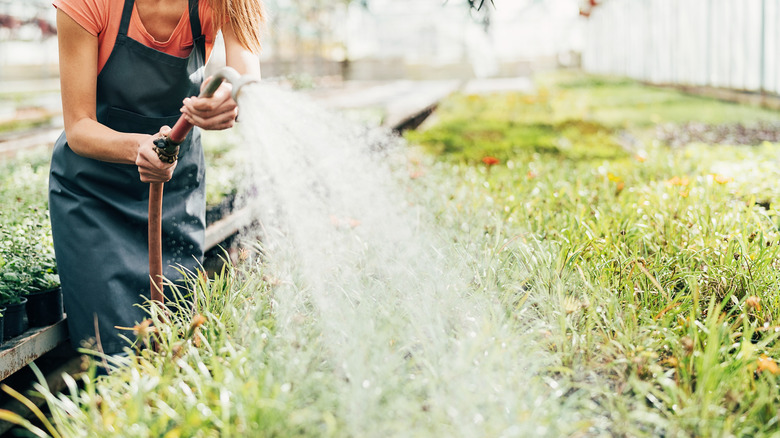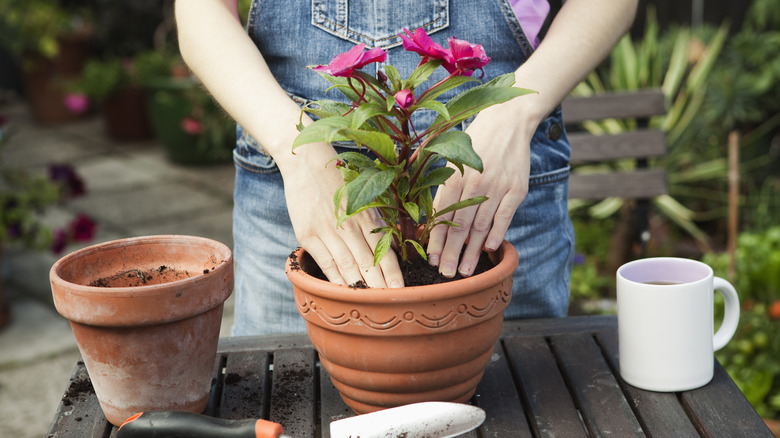The First Thing You Should Check After Bringing A Plant Home From The Nursery
Bringing home a new plant can be super exciting. You have done the hard work of scouring your local nursery (or big box store), picked out the perfect bit of greenery, and now you have finally gotten it home. All that is left to do is find the right spot for it and let it flourish, right?
Well, hold on a minute. Before you take your eyes off of your new plant, there is one important step you should never skip — checking the moisture level of the soil your plant came home in. Plants are a lot like us: They need just the right amount of water to feel their best, and while you might think your plant came home from the nursery in perfect condition, that's not always the case.
The sad truth is that some nurseries tend to overwater their plants to keep them looking lush for sale, and that can actually harm your plants further on down the line. So, what should you do? Well, to save your overwatered plant, first you will need to know how to check the moisture level, then rectify the situation by swapping out the soil.
Why should you check your plants for overwatering?
Now, we can't be the only ones to have noticed that sometimes big-box stores seem to treat their plants like they're training for a swim meet. There are several reasons for this, including automatic watering systems, soil that isn't quite right, and rushed staff trying to water a whole bunch of plants and not having the time to pay attention to individual pots. While this can be fine on occasion, leaving your plants in super wet soil can cause more harm than you might think.
When a plant's roots are submerged in waterlogged soil, things can go downhill fast. Excess moisture cuts off the oxygen supply, essentially suffocating the roots. Besides drowning your plant, this overwatering can lead to root rot, which is exactly as delightful as it sounds. It's a common issue that occurs when roots sit in overly wet conditions for too long, turning the roots all brown and mushy and rendering them unable to take in adequate nutrients. Plants suffering from root rot display a range of symptoms, including leaves turning yellow or wilting, cracked stems, stunted growth, or unplanned plant funerals. That is why it is so important to address these soggy situations as soon as you notice them.
How do you fix an overwatered plant from the store?
So, what is the first thing you should do when you get home after buying plants from a big box store? Well, if you notice a bit too much water in the soil, you'll want to take it out right away. Remove the root ball from the soil, then gently massage it until the wet soil falls away. This gives you a chance to check for root rot or any signs of distress. Sometimes, you may need to section out the plant piece by piece, ensuring all the soaked soil is gone.
Now that you've liberated the roots, it's time to repot. Grab some dry, fresh soil, and place your plant back into its original pot or a new one of the same size. Fresh soil provides better aeration, allowing the roots to breathe properly, which creates a better environment for growth. Afterward, make sure you don't water your plant for at least two to three days. This might sound counterintuitive, but after its drowning session at the store, your plant needs a little drying time.
But wait — what if you've got leftover soaked soil that's still of good quality? Don't toss it! Instead, check it for pests, treat it with a little hydrogen peroxide, and then toss it back into your soil bag. This way, you're reducing waste and preparing for future potting adventures. Plus, it's always handy to have extra soil around for any spontaneous plant purchases.


